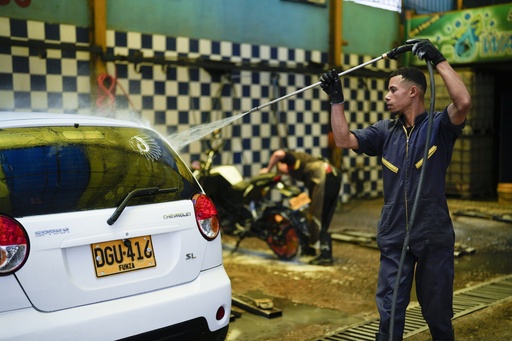BOGOTA, Colombia (AP) — Luis Soler is caring for water as if it were the most expensive ingredient at his restaurant in Colombia’s capital.
For the first time in 40 years, a severe drought pushed the city to start rationing tap water. At Soler’s restaurant in Bogota, nothing flowed through the pipes Friday. The city’s warnings allowed him to prepare for the change, buying bottled water for cooking purposes and storing tap water for dish washing, and since his entire neighborhood was facing the same inconvenience as the restaurant, he said he expected sales to go up, not down.
“I think the impact is not going to be much. On the contrary, we are waiting for sales to improve a little because there is no water in the neighborhood and many people are not going to cook,” Soler said.
Officials in Bogota moved to ratio water after reservoirs hit historically low levels due to the combination of high temperatures and lack of rainfall prompted by the El Niño climate phenomenon.
The rationing began Thursday. It will affect neighborhoods in 24-hour periods three times per month. Local officials will review the measure every 15 days to decide whether it should be eliminated, maintained or increased.
Bogota residents had not experienced water rationing since 1997, when a technical failure in the system forced officials to restrict water service. The last drought-caused rationing was in 1984.
Officials have recommended people store only the amount of water they absolutely need, not wash cars and implement water-saving measures at home, even when they shower.
“Shower with your partner,” Bogota Mayor Carlos Fernando Galán suggested. “It is a pedagogical exercise in saving water.”
Given the recommendation not to wash cars frequently, businesses that provide that service could be affected.
“Fewer people are coming in. I imagine because people think it is not open, but it is also very good that we take care of the water,” said John Guerrero, who owns a car wash.
Bogota consumes an average of 18 cubic meters of water per second, and under the rationing system, officials are aiming to cut 2 cubic meters per second. Officials hope to fill reservoirs by more than 70% by the end of the year.
This website uses cookies so that we can provide you with the best user experience possible. Cookie information is stored in your browser and performs functions such as recognising you when you return to our website and helping our team to understand which sections of the website you find most interesting and useful.
